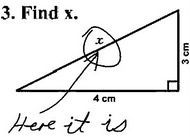[New York]: New York Bakes Bread
As long as I can remember - thanks to Ma - I've known basically how to make one good kind of bread.
Challah
Mix well:
1 packet quick yeast
2 tablespoons brown sugar
1 teaspoon salt
1.5 cup warm water
1.5 cup bread flour
Let sit for 15 minutes.
Add 2 eggs and 2 tablespoons oil and stir well. Then add flour gradually until the dough is thick enough to knead by hand. Knead until the dough is a smooth ball. Cover the dough with oil and let it sit in a warm dark place for 2 hours, then punch down and let it rise again for another 45 minutes.
Separate the dough into braidable strands, braid, let rise for 30 minutes. Brush with egg white and bake at 350 until brown on top.
When I started living in an apartment big enough to bake in, I got interested in learning how to bake other kinds of bread. So I bought a couple of books about bread baking. To my disappointment, these books all had things in them like "exact temperatures", "precise weight measurements" and "careful timing." I'm not really that kind of a cook. I'm more a "let's see if this tastes good and then add some other stuff if it doesn't" kind of a cook.
However, I realized that it's hard to branch out using my normal strategy, because I don't have any way of knowing if something that looks different than what I like is actually bad or just different. If I followed a new recipe even just once, and found a new kind of bread that I liked, I would then be able to bake more kinds of bread that I liked and would be able to go back to baking by instinct, or as my mother and I call it, the "Measure Carefully" technique. ("Measure carefully!" being the words we used to admonish each other cheerfully while dumping random amounts of ingredients into our mixing bowls).
So my first attempt to follow a baking recipe exactly went like this. I bought this book called Bread Alone, by Daniel Leader. The first recipe in this book (after the stories about his travels in France and color pictorials of all the equipment you're supposed to own such as scales and peels) was a recipe called:
A Learning Recipe: Classic Country Style Hearth Loaf
Okay, I thought. I can do this. I will follow this recipe exactly. (Italics, below, are paraphrases of what Dan Leader told me to do. They're not exact transcriptions because the recipe is 10 pages long and this post would be even longer).
A Learning Recipe: Classic Country Style Hearth Loaf
Step 1: Combine 1/2 cup spring water, 1/2 teaspoon yeast, and 3/4 cup 20% bran wheat flour.
Damn! Things are getting difficult already. I disobey the recipe immediately by using tap water instead of spring water. But I do go out and buy special normal yeast instead of "quick rise" yeast so I can do this right. And what is 20% bran wheat flour? It turns out you can fake this by combining wheat and white flour in a 1:3 ratio. I have every intention of doing this precisely, but I can't find the right measuring cup so the ratio ends up something more like 1:4 probably. To make amends to Dan Leader, I follow his advice to "sweep the excess off the top so the flour is level with the rim of the cup or spoon."
I actually like this cookbook, I am just demonstrating why it is actually really hard to follow directions when you are cooking.
Stir for about 100 strokes or until the strands of gluten come off the spoon when you press the back of the spoon against the bowl.... Cover with plastic wrap and place in a moderately warm place until mixture is bubbly and has increased in volume.
I do this, although i don't put the mixture in a measuring thingy so I don't know exactly when it has doubled.
Add 2.5 cups spring water, 1/4 teaspoon yeast, 1 tablespoon sea salt, 1 cup flour, and stir. Then knead, keeping the dough as sticky as you can handle, for 15 to 17 minutes.
I even have sea salt. I am so on top of this.
Shape the dough into a ball, coat with butter, and let it rise until doubled in volume in a warm place. Take the dough's temperature: the ideal is 78 degrees Fahrenheit. Note: If the dough temperature is higher than 78 place it in a cooler place like the refrigerator. If it is lower than 78 put it in a warmer than 78 place until the dough warms up.
I actually have a thermometer I could stick in the dough, but I just can't be bothered. How warm is it in my room? Warm. Probably about 78 degrees.
Deflate the dough by pushing down in the center and pulling up on a sides. Form gain into a ball... let rest 30 minutes.
Sometimes I skip this step but out of respect to Baker Dan i even deflate the dough in the way he recommends.
Deflate the dough, knead briefly, cut into 2 equal pieces, flatten each with the heel of your hand using firm direct strokes... shape each piece into a tight ball for round loaves.
Ok.
Line two bowls or baskets about 8 inches in diameter and 3 inches deep with well floured lint-free towels and place the loaves smooth side down in each bowl. Dust top side with flour. Cover with plastic wrap and put in a moderately warm draft free place until increased in volume about 1.5 times.
I don't have the German wicker baskets Baker Dan so lovingly recommends, but Baker Dan is firm that the dough needs to "breathe," so I flour up a clean dish towel, hoping it's lint free, and drape it over 2 colanders, and put the dough balls inside the colanders. Major points to anyone who can see the problems this improvised solution will eventually cause me. Here's where I think I blow it - I actually have to leave the house at this point and the dough sits for about 2.5-3 hours (instead of 1.5-2 as the book estimates). So it's super poofy.

Preheat oven and baking stone. Gently invert the loaves from the baskets onto a floured board so they are right side up. Score the loaves by making quick shallow cuts with a knife or razor blade 1/4 to 1/2 inch deep along the surface.
Aha. Now you see my problem. I cannot figure out how to get these lovely fluffy dough balls out of the colanders since they are each stuck to one half of the dish towel. Flip one and the other one lands on the counter or the floor. I eventually use my excellent spacial skills to flip them out, but in the process, they deflate. I am bummed. The scoring is fun, though, makes me feel like a real baker.
Using a well floured peel, slide the loaves into the hearth and quickly spray the inner walls and floor of the oven with cold water from a spritzer bottle. If there's a light in the oven, avoid spraying it directly, it may burst. Bake 20 minutes at 450 degrees and another 15-20 minutes at
I don't have a peel, and my loaves are already deflated. I slide the now bialy-shaped loaves into the oven and forget to check whether the temperature is exactly 450 degrees. I spritz the oven with the spritzer we got for disciplining the cat (it doesn't work, the water just excites her) but not very vigorously because Dan has made me afraid of bursting the light and getting glass shards all over my dough and my face.
It is important to allow large loaves to cool at least 20 minutes because they actually finish baking as they cool.
Now get this - I don't even cut the loaves until they are cooled! (Dan says this will conserve their moisture). I'm so proud of myself. This was the hardest part of the recipe to follow.
Actually, the loaves look great, although they never get really round again and the crust is sort of floury and soft instead of hard. They're a bit dense (probably because they collapsed when I put them in the oven) but they are rich and wheaty-tasting and pretty moist, which is actually great because it's been more than two days and they don't seem stale yet at all!


So far this was a great success. Tomorrow someone with more self control would make the same recipe again, but I'm going to go ahead and bake some baguettes and see how they turn out. The baguette recipe has me keeping a yeast starter for 24 hours on a shelf, and I've had one there for about 12 hours now. It's already starting to scare me - it's sort of seething and bubbling and giving off a smell stronger than what I'm used to smelling in bread dough - but for the cause of science, I must continue. I'll keep you posted.
Technorati Tags: bread, recipe
Labels: recipes



 A few of my daughter
Melina's great posts:
A few of my daughter
Melina's great posts:








1 Comments:
I hear that instead of spritzing you can toss a couple of ice cubes on the floor of the oven.
Post a Comment
<< Home